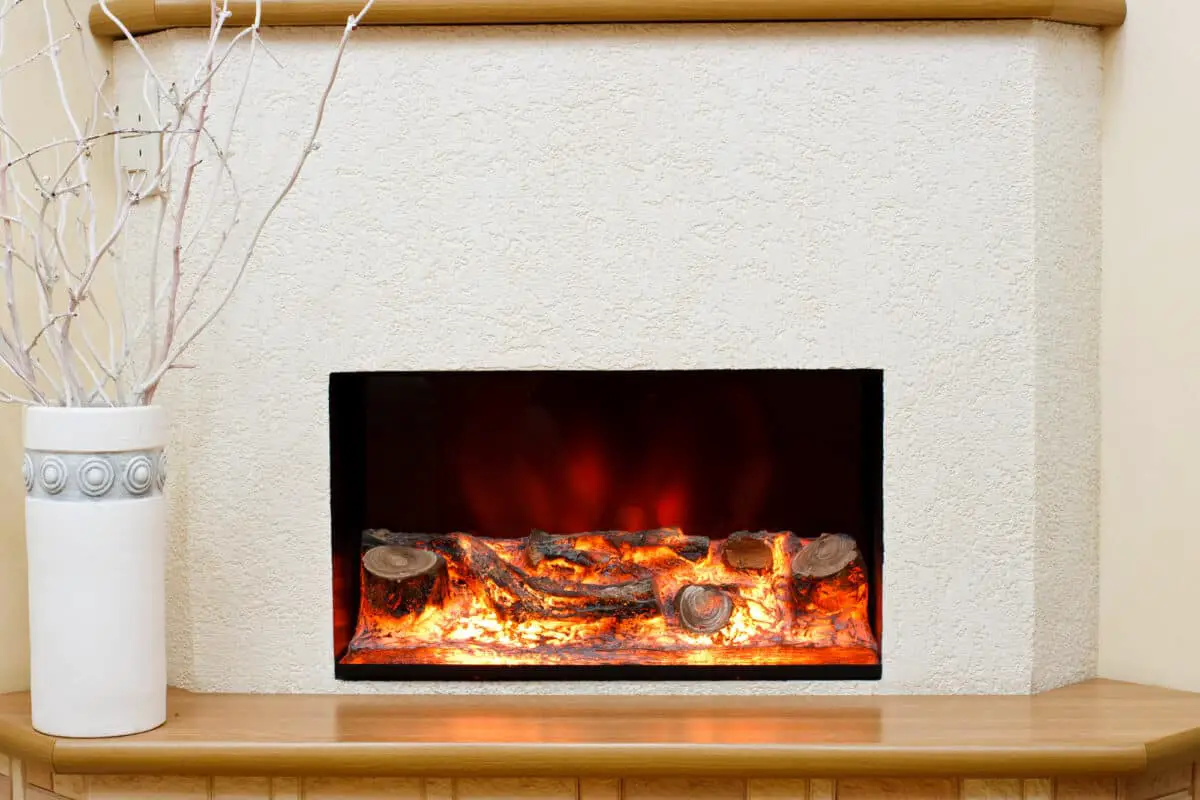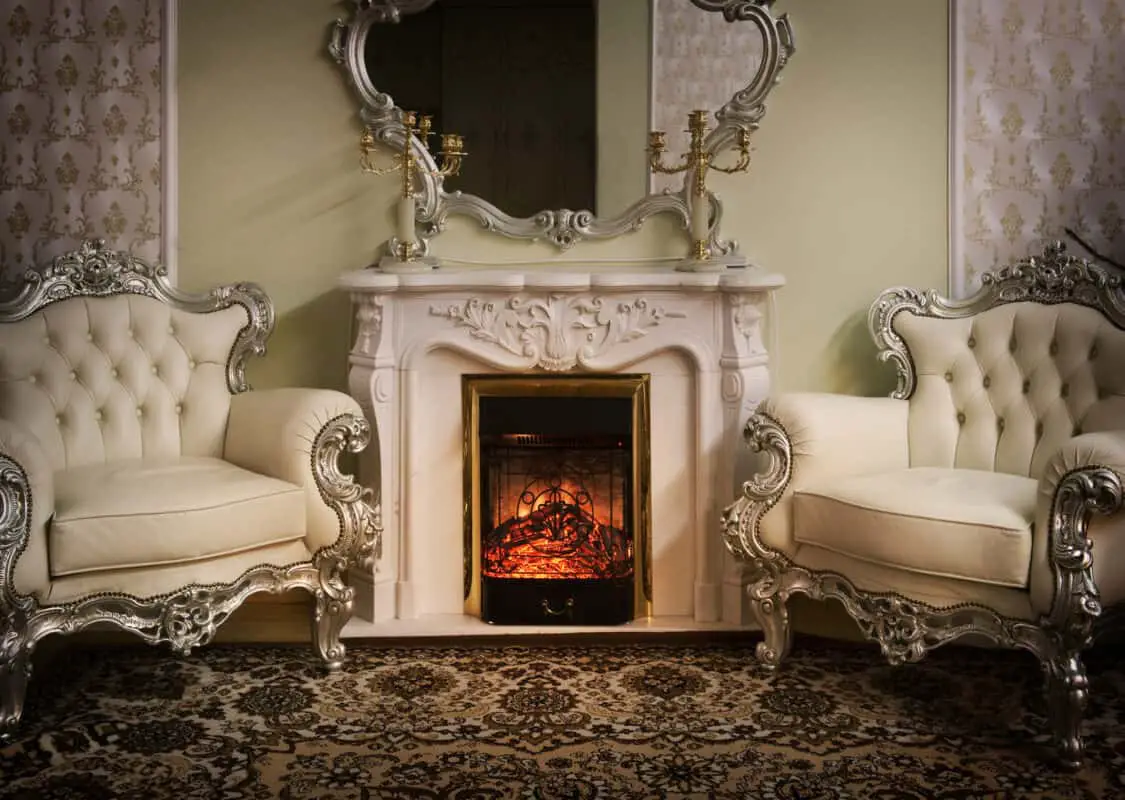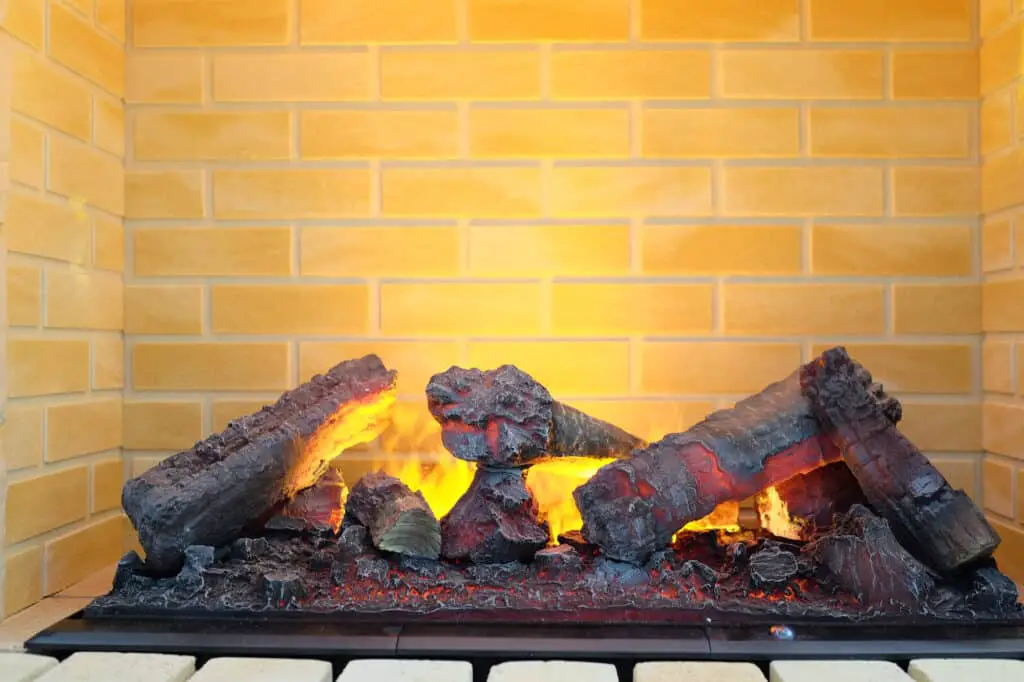Many people use electric fireplaces to warm up small indoor areas or individual rooms due to their various sizes and heating capabilities.
Unlike traditional wood-burning fireplaces, electric fireplaces don’t generate smoke or soot, which makes them a popular choice among homeowners.
Fireplaces have become a thing of the past for the most part.
As a result, many people may not be familiar with traditional or electric fireplaces.
Although electric fireplaces may not have the same appearance, smell, or operation as conventional fire-burning fireplaces, their main function is to provide heat.
This article will explore the history of fireplaces and their modern usage, including electric fireplaces.

Table of Contents
What Are Electric Fireplaces?
Electric fireplaces are electronic appliances that produce heat.
They are not intended for cooking purposes but instead serve as both decorative and functional household items.
There are several reasons why electric fireplaces may be a better option than traditional fireplaces.
Some of the most significant advantages include:
- How affordable electric fireplaces are, primarily standalone models.
- How many design and customization options are available to consumers?
- Their superior safety and performance as compared to wood-burning models.
- Their lack of soot, ashes, and other harmful airborne contaminants.
An electric fireplace can have a traditional appearance, replete with a mantle. It can also be a standalone device that is exceptionally portable.
Some electric fireplaces come with a built-in display screen that shows digital flames while being used.
However, it is important to note that these fireplaces are much safer than traditional wood-burning models.
Unlike wood-burning fireplaces, electric fireplaces produce no carbon monoxide and have no actual flames.
Instead, they use internal heating coils and fans to generate heat.
Homes that don’t typically get cold enough to warrant having a heater can benefit from an electric fireplace.
They’re easy to install and operate, and energy-efficient models abound.
Like traditional wood-burning fireplaces, electric fireplaces can help keep homes warm and comfortable during bouts of cold weather.
Electric Fireplaces Uses
It may be hard to imagine, but there was a time when central heating and air conditioning did not exist.
In addition, there was a period when electric and gas cooking appliances were not commonplace, and most households had to rely on wood-burning stoves and makeshift fireplaces to keep warm and cook food.
These non-digital appliances were crucial to sustaining life in homes during that era.
While they provided shelter, homes in the past were also responsible for causing unimaginable disasters.
Due to poverty, many households had to settle with straw floors and thatched roofs instead of durable stone flooring and roofing.
These living spaces were often cramped, and the dried grass roofs were extremely flammable.
Even a single spark or ember from a stove or fireplace could result in a fire that would quickly spread to the rest of the house.
To make matters worse, the first fireplaces were hardly ever cleaned or maintained.
The amount of soot and smoke that resulted from continually using these filthy fireplaces was a fire hazard and a significant risk to tenants’ health.
It’s important to acknowledge that without the early wood-burning fireplaces, the electronic fireplaces that we have today wouldn’t exist.
History of Fireplaces
Humans have been creating and using fire for over a million years.
Evidence from anthropological records and archaeological sites suggests that fire was an essential tool for early civilizations.
Almost every tribe in history has relied on the warmth, cooking ability, and protective qualities of fire to survive.
The mastery of fire has been crucial to human civilization’s development, demonstrated by ancient Mesopotamians’ complex furnaces, the Harappan
Civilization’s understanding of metallurgy, and the Yangtze River Valley Civilization’s early smelting skills.
Sadly, thousands of years’ worth of accumulated knowledge began to disappear during the collapse of the Greek Empire. By the final fall of the Roman Empire, most of Western Civilization’s collective mathematical, scientific, and historical documents were gone.
Living in larger, urban areas and low-quality rural housing during the post-ancient, pre-industrial era meant that catastrophic fires were an unavoidable risk.
Gas-powered vehicles were patented before 1900, but it took many years for them to replace their sooty predecessors.
By the time most homes installed natural gas hookups, electricity was on the rise.
Despite the scientific and artistic advancements of the last millennium, many households continued to depend on wood-burning fireplaces for sustenance and warmth.
Typically, families had a hearth fire at the center of their dwelling, which provided adequate heat and cooking space for multiple serf families to survive and maintain some degree of health.

After the Great Fire of London destroyed a significant part of the city in 1666, there was a greater emphasis on fire safety regulations and guidelines.
Prior to this, homes were prone to catching fire easily, and once one building caught fire, the neighboring shacks were also at risk of going up in flames.
The rise of the middle class and the Golden Age of Electricity brought forth thousands of electrical products and appliances that flooded the new consumer market, which were readily purchased by shoppers in massive amounts.
In 1912, the first electric fireplace was invented.
However, it wasn’t until the post-war economic boom of the 1950s that these devices became popular among shoppers.
Electric fireplaces are safer, cleaner, and more convenient than traditional wood-burning models, even with fireplace blowers.
Once the public became aware of these benefits, they never looked back.

Final Thoughts
Electric fireplaces are used to provide heat in homes that lack alternative heating systems.
Unlike traditional wood-burning fireplaces, electric fireplaces do not pollute indoor air, pose a fire hazard, or require constant cleaning and maintenance.
Electric fireplaces can be more affordable than traditional ones.
Personalized touches include faux burned wood pieces, customized lighting, virtual flame options, and pre-recorded ‘wood-burning’ sounds.
While these devices may not be suitable for toasting marshmallows, they can be an excellent option for chilly rooms or frigid apartments.
Enjoy living the outdoor life!!!
